Unitary state


| Part of the Politics series | ||||||||
| Basic forms of government | ||||||||
|---|---|---|---|---|---|---|---|---|
| Power structure | ||||||||
|
||||||||
| Power source | ||||||||
|
||||||||
| Power ideology | ||||||||
|
||||||||
| Politics portal | ||||||||
A unitary state is a state governed as a single power in which the central government is ultimately supreme and any administrative divisions (sub-national units) exercise only the powers that the central government chooses to delegate. The majority of states in the world have a unitary system of government. Of the 192 UN member states, 165 are governed as unitary states.
In a unitary state, sub-national units are created and abolished (an example being the 22 mainland regions of France being merged into 13), and their powers may be broadened and narrowed, by the central government. Although political power may be delegated through devolution to local governments by statute, the central government remains supreme; it may abrogate the acts of devolved governments or curtail their powers.
The United Kingdom of Great Britain and Northern Ireland is an example of a unitary state. Scotland, Wales and Northern Ireland have a degree of autonomous devolved power, but such power is delegated by the Parliament of the United Kingdom, which may enact laws unilaterally altering or abolishing devolution (England does not have any devolved power).[1] Many unitary states have no areas possessing a degree of autonomy.[2] In such countries, sub-national regions cannot decide their own laws. Examples are the Republic of Ireland and the Kingdom of Norway.[3] In federal states, the sub-national governments share powers with the central government as equal actors through a written constitution, to which the consent of both is required to make amendments. This means that the sub-national units have a right of existence and powers that cannot be unilaterally changed by the central government.
Unitary states are contrasted with federations. An example of a federation is the United States of America. Under the U.S. Constitution, powers are shared between the federal government and the states. Its Article V states that the approval of three-quarters of the states, in either their legislatures or state ratifying conventions, must be attained for an amendment to take effect, giving the states a strong degree of protection from domination by the centre.[4]
List of unitary states
Italics: States with limited recognition
Unitary republics
-
 Abkhazia
Abkhazia -
 Afghanistan
Afghanistan -
 Albania
Albania -
 Algeria
Algeria -
 Angola
Angola -
 Armenia
Armenia -
 Azerbaijan
Azerbaijan -
 Bangladesh
Bangladesh -
 Belarus
Belarus -
 Benin
Benin -
 Bolivia
Bolivia -
 Botswana
Botswana -
 Bulgaria
Bulgaria -
 Burkina Faso
Burkina Faso -
 Burundi
Burundi -
 Cameroon
Cameroon -
 Cape Verde
Cape Verde -
 Central African Republic
Central African Republic -
 Chad
Chad -
 Chile
Chile -
 China, People's Republic of[5]
China, People's Republic of[5] -
 China, Republic of (Taiwan) (federation before 1949)
China, Republic of (Taiwan) (federation before 1949) -
 Colombia
Colombia -
 Congo
Congo -
 Costa Rica
Costa Rica -
 Croatia
Croatia -
 Cuba
Cuba -
 Cyprus
Cyprus -
 Czech Republic
Czech Republic -
 Democratic Republic of the Congo
Democratic Republic of the Congo -
 Djibouti
Djibouti -
 Dominica
Dominica -
 Dominican Republic
Dominican Republic -
 Donetsk People's Republic
Donetsk People's Republic -
 East Timor
East Timor -
 Ecuador
Ecuador -
 Egypt
Egypt -
 El Salvador
El Salvador -
 Equatorial Guinea
Equatorial Guinea -
 Eritrea
Eritrea -
 Estonia
Estonia -
 Fiji
Fiji -
 Finland
Finland -
 France
France -
 Gabon
Gabon -
 Gambia
Gambia -
 Georgia
Georgia -
 Ghana
Ghana -
 Greece
Greece -
 Guatemala
Guatemala -
 Guinea
Guinea -
 Guinea-Bissau
Guinea-Bissau -
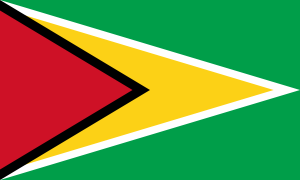 Guyana
Guyana -
 Haiti
Haiti -
 Honduras
Honduras -
 Hungary
Hungary -
 Iceland
Iceland -
 Indonesia (federation before 1950)
Indonesia (federation before 1950) -
 Iran
Iran -
 Ireland
Ireland -
 Israel
Israel -
 Italy
Italy -
 Ivory Coast
Ivory Coast -
 Kazakhstan
Kazakhstan -
 Kenya
Kenya -
 Kiribati
Kiribati -
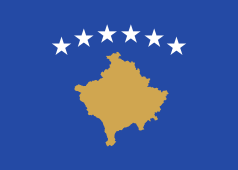 Kosovo
Kosovo -
 Kyrgyzstan
Kyrgyzstan -
 Laos
Laos -
 Latvia
Latvia -
 Lebanon
Lebanon -
 Liberia
Liberia -
 Libya
Libya -
 Lithuania
Lithuania -
.svg.png) Luhansk People's Republic
Luhansk People's Republic -
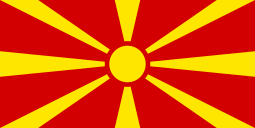 Macedonia
Macedonia -
 Madagascar
Madagascar -
 Malawi
Malawi -
 Maldives
Maldives -
 Mali
Mali -
 Malta
Malta -
 Marshall Islands
Marshall Islands -
 Mauritania
Mauritania -
 Mauritius
Mauritius -
 Moldova
Moldova -
 Mongolia
Mongolia -
 Montenegro
Montenegro -
 Mozambique
Mozambique -
 Myanmar
Myanmar -
 Nagorno-Karabakh Republic
Nagorno-Karabakh Republic -
 Namibia
Namibia -
 Nauru
Nauru -
 Nicaragua
Nicaragua -
 Niger
Niger -
 North Korea
North Korea -
 Northern Cyprus
Northern Cyprus -
 Palau
Palau -
 Palestine
Palestine -
 Panama
Panama -
 Paraguay
Paraguay -
 Peru
Peru -
 Philippines
Philippines -
 Poland
Poland -
 Portugal
Portugal -
 Romania
Romania -
 Rwanda
Rwanda -
 Samoa
Samoa -
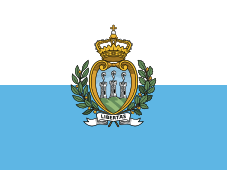 San Marino
San Marino -
 São Tomé and Príncipe
São Tomé and Príncipe -
 Senegal
Senegal -
 Serbia
Serbia -
 Seychelles
Seychelles -
 Sierra Leone
Sierra Leone -
 Singapore
Singapore -
 Slovakia
Slovakia -
 Slovenia
Slovenia -
 Somaliland
Somaliland -
 South Africa
South Africa -
 South Korea (federation before 1960)
South Korea (federation before 1960) -
 South Ossetia
South Ossetia -
 Sri Lanka
Sri Lanka -
 Suriname
Suriname -
 Syria
Syria -
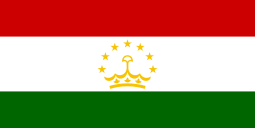 Tajikistan
Tajikistan -
 Tanzania
Tanzania -
 Togo
Togo -
 Transnistria
Transnistria -
 Trinidad and Tobago
Trinidad and Tobago -
 Tunisia
Tunisia -
 Turkey
Turkey -
 Turkmenistan
Turkmenistan -
 Uganda
Uganda -
 Ukraine
Ukraine -
 Uruguay
Uruguay -
 Uzbekistan
Uzbekistan -
 Vanuatu
Vanuatu -
 Vietnam
Vietnam -
 Yemen
Yemen -
 Zambia
Zambia -
 Zimbabwe
Zimbabwe -
 Peru
Peru
Unitary monarchies
-
 Andorra
Andorra -
 Antigua and Barbuda
Antigua and Barbuda -
 Bahrain
Bahrain -
 Bahamas
Bahamas -
 Barbados
Barbados -
 Belize
Belize -
 Bhutan
Bhutan -
 Brunei
Brunei -
 Cambodia
Cambodia -
 Denmark
Denmark -
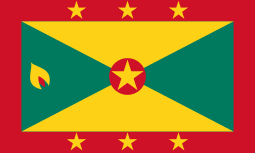 Grenada
Grenada -
 Jamaica
Jamaica -
 Japan
Japan -
 Jordan
Jordan -
 Kuwait
Kuwait -
 Lesotho
Lesotho -
 Liechtenstein
Liechtenstein -
 Luxembourg
Luxembourg -
 Monaco
Monaco -
 Morocco
Morocco -
 Netherlands
Netherlands -
 New Zealand[6]
New Zealand[6] -
 Norway
Norway -
 Oman
Oman -
 Papua New Guinea
Papua New Guinea -
 Qatar
Qatar -
 Saint Lucia
Saint Lucia -
 Saint Vincent and the Grenadines
Saint Vincent and the Grenadines -
 Saudi Arabia
Saudi Arabia -
 Solomon Islands
Solomon Islands -
 Spain
Spain -
 Sweden
Sweden -
 Thailand
Thailand -
 Tonga
Tonga -
 Tuvalu
Tuvalu -
 United Kingdom[7]
United Kingdom[7] -
 Vatican City
Vatican City
5 largest unitary states by nominal GDP
5 largest unitary states by population
5 largest unitary states by area
See also
- Centralized government
- Constitutional economics
- Political economy
- Regional state
- Rule according to higher law
- Unitary authority
References
- ↑ Devolution within a unitary state, like federalism, may be symmetrical, with all sub-national units having the same powers and status, or asymmetric, with sub-national units varying in their powers and status.
- ↑ "unitary system | government". Encyclopedia Britannica. Retrieved 2017-08-11.
- ↑ Svalbard has even less autonomy than the mainland. It is directly controlled by the government and has no local rule.
- ↑ Many federal states also have unitary lower levels of government; while the United States is federal, the states themselves are unitary under Dillon's Rule – counties and municipalities have only the authority granted to them by the state governments under their state constitution or by legislative acts. For example, in the state of Connecticut, county government was abolished in 1960.
- ↑ Roy Bin Wong. China Transformed: Historical Change and the Limits of European Experience. Cornell University Press.
- ↑ "Story: Nation and government – From colony to nation". The Encyclopedia of New Zealand. Manatū Taonga Ministry for Culture and Heritage. 29 August 2013. Retrieved 19 April 2014.
- ↑ "Social policy in the UK". An introduction to Social Policy. Robert Gordon University - Aberdeen Business School. Retrieved 19 April 2014.